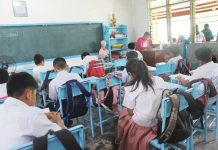
Mangroves and Fisheries: A Perfect Partnership
One of the best ways to promote mangrove restoration is to emphasize its economic benefits. Did you know that fishponds and mangrove forests can co-exist and even complement each other?
Mangroves provide nursery grounds for fish and crustaceans, which in turn supports fisheries and improves local incomes.
In fact, mangrove forests can even be developed into eco-tourism attractions. If properly maintained, they can become sanctuaries for bird species, attracting bird watchers and nature enthusiasts.
Some countries measure the success of mangrove restoration by recording bird calls, while others, like Singapore, use cameras to monitor wildlife presence in their urban wetlands. The Philippines could follow these best practices to track progress.
Interagency Collaboration: A Missing Link
Mangrove restoration cannot be handled by just one agency. It requires collaboration between multiple government offices, scientific institutions, and the private sector.
To make this happen, the government should establish Technical Working Groups (TWGs) or coordinating councils that bring together the following agencies:
* DENR – Overall lead agency for reforestation and land management
* Forest Management Bureau (FMB) – Overseeing mangrove conservation
* Bureau of Fisheries and Aquatic Resources (BFAR) – Ensuring sustainable fishery practices
* Department of Science and Technology (DOST) – Providing research and technology support
* Forest Products Research and Development Institute (FPRDI) – Studying the sustainable use of mangrove resources
* Philippine Space Agency (PhilSA) – Using satellite data to monitor mangrove growth
* UP College of Fisheries and Ocean Sciences (CFOS) and UP College of Forestry and Natural Resources (CFNR) – Providing research-based guidance
* Department of Agriculture (DA) – Exploring crops that can thrive in mangrove forests (e.g., coffee and cacao)
* Department of Trade and Industry (DTI) – Supporting value-added processing of fish and other marine products
Even if CFOS is in Iloilo and CFNR is in Laguna, they should collaborate because mangrove forests directly impact fishery resources.
The Philippine Space Agency (PhilSA), in partnership with DENR, should also develop an online database tracking the growth of mangrove forests nationwide in real time.
An Interdisciplinary, Interagency, and Intersectoral Mission
Restoring mangrove areas should not be treated as an isolated environmental project. It must be recognized as a multi-sectoral initiative that contributes to:
* Environmental protection – Preventing coastal erosion, acting as natural storm barriers
* Food security – Supporting fisheries and marine biodiversity
* Disaster mitigation – Reducing storm surges and coastal flooding
* Community livelihood – Providing sustainable sources of income
* Climate change adaptation – Absorbing carbon and reducing global warming effects
This is not just about planting trees—it’s about securing our future. If we are truly serious about restoring our mangrove areas, we need bold policies, strong partnerships, and measurable outcomes. The time for talk is over—it’s time to act./PN







